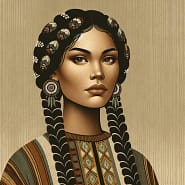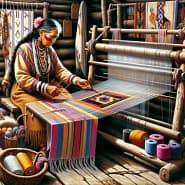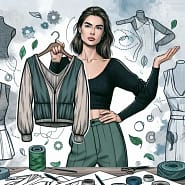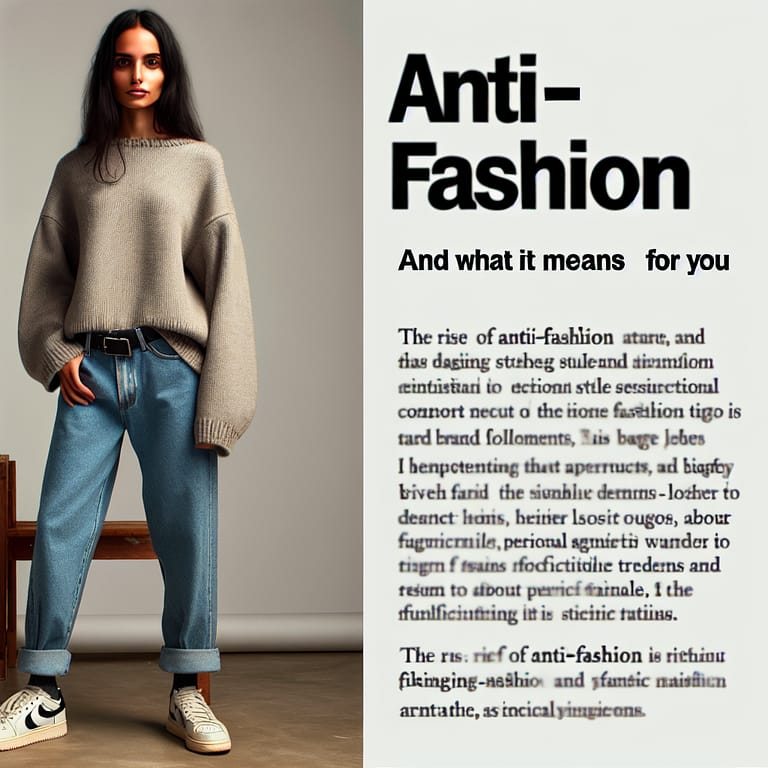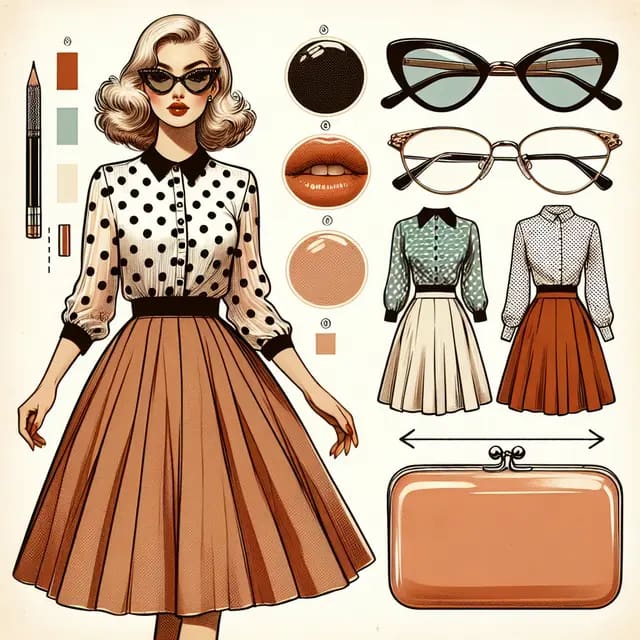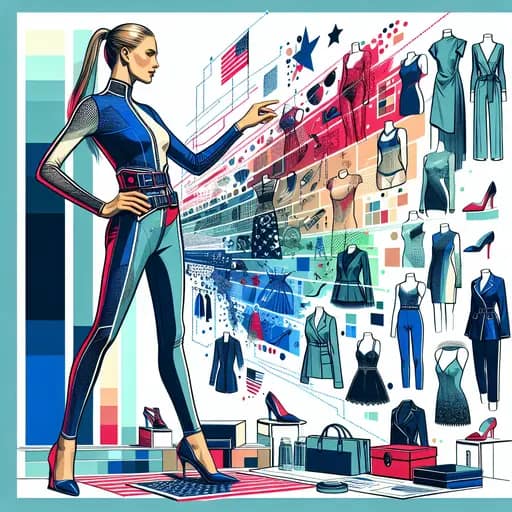Introduction: Explaining the concept of Anti-Fashion
Are you weary of the mainstream fashion industry’s rigidity and fierce fixation on trends? Then you, like many others, may find solace in the rise of Anti-Fashion.
Anti-Fashion, as a term, may initially seem like a contradiction. Fashion has long been recognized as a medium for expressing individuality and personal style, so what exactly could be ‘anti’ about it? Well, to provide a more profound understanding, we delve into the essence of Anti-Fashion.
- The first point to remember is that Anti-Fashion is not against fashion per se, but rather against the norms and constraints of mainstream fashion.
- It represents a departure from traditional fashion notions, advocating for a more inclusive, sustainable, and ethical fashion industry.
- Anti-Fashion embraces individuality and self-expression, rejecting the prevailing trend-centric and consumer-driven fashion narrative.
With this introduction to Anti-Fashion, this article aims to shed light on its historical roots, its influence on the conventional fashion industry, and its key characteristics. We will also explore its connection to sustainability practices, and its impact on the social media landscape. Moreover, we will inspect the challenges and criticisms it faces, and the pivotal role of individuality and self-expression within this movement.
As society continues to evolve, it is essential to question and challenge the status quo. Anti-Fashion offers a fresh perspective, and learning about it can prove beneficial to both the passionate fashion enthusiast and the everyday individual looking to express themselves. Ready for this deep-dive into the world of Anti-Fashion? Keep scrolling to enrich your perspective on what it truly means to be fashionable in today’s ever-evolving world.
The Historical Roots of Anti-Fashion Movements
Understanding the roots of Anti-Fashion movements demands delving into a complex history, observing various societal shifts and turning points. In essence, Anti-Fashion isn’t just a trend, it is a socio-cultural response to mainstream aesthetics and the traditional understanding of fashion. Let’s take a time-travel back to its inception:
- Counterculture Movements: The seeds of Anti-Fashion were sown in the various counterculture movements of the 1960s and 1970s. Characterized by rebellion against societal norms, these movements questioned the conventional buzzwords of fashion, style, and aesthetics.
- Punk Revolution: The Punk Revolution of the 1970s and 80s, with its iconic anti-establishment attitudes, fueled the rise of Anti-Fashion.
- Grungy Nineties: Anti-Fashion took a significant turn in the early 1990s, reflected vividly in the grunge movement. It celebrated nonchalance and discarded fashion rules, marking a stark contrast to the glam trends of previous decades.
- Rejection of Fast Fashion: The late 2000s saw a growing awareness of the unethical practices within the mainstream fashion industry. This propelled the Anti-Fashion movement forward, as many started rejecting fast fashion in favor of more sustainable, ethical alternatives.
Each of these eras holds immense significance while discussing the historical roots of Anti-Fashion. Clothed in rebellion, powered by unique forms of self-expression, and transformative in its approach; Anti-Fashion unclothes the societal, economic, and cultural undercurrents of different times. As we further explore the influence of Anti-Fashion on the mainstream fashion industry, let’s keep these historical insights in perspective.
Through understanding the genesis of the Anti-Fashion movement, we can make sense of its current state and the spot it has carved in the fashion industry. In the next segment, we will see how the Anti-Fashion movement has posed challenges to the mainstream fashion industry and rewritten the narrative of ‘what is in vogue’.
The Influence of Anti-Fashion on Mainstream Fashion Industry
The rise of Anti-Fashion has undeniably led to a paradigm shift in the mainstream fashion industry. The appeal of Anti-Fashion stems from its rebellious and independent spirit, often prioritizing individuality, sustainability, and ethical practices. This has inevitably exerted an influential impact on mainstream fashion, provoking a significant alteration of the industry’s principles, aesthetics, and methodologies.
- Subverting Traditional Aesthetics: Anti-Fashion challenges the so-called ‘ideal beauty standards’ set by the mainstream fashion industry. This disruption has caused large fashion houses to reconsider their conventional designs, leading to more diverse and inclusive styles.
- Emphasizing Sustainability: A key aspect of Anti-Fashion is its focus on sustainability. This has pressured mainstream fashion into adopting better production practices and considering the impact of their actions on the environment.
- Influencing Consumer Behaviour: Anti-Fashion encourages consumers to be more conscious of their fashion choices. This has led to an evolving shift in buying patterns, with more customers placing an emphasis on quality, longevity, and ethical production.
- Championing Individuality: Anti-Fashion promotes self-expression and individuality over popular trends. This influence has encouraged mainstream fashion to create more unique and personality-matching pieces.
Through these impacts, Anti-Fashion has reshaped the current fashion landscape. It acts as a counter-discourse to mainstream fashion, redefining established norms and expectations through its essential message of uniqueness, ecological responsibility and ethical mindfulness.
Next, we’ll explore some of the key characteristics of Anti-Fashion, to provide further context to the nature of this transforming movement and its continued influence on the fashion industry.
Key Characteristics of Anti-Fashion
The appeal of Anti-Fashion lies in its deliberate divergence from mainstream style norms. In understanding the hallmark characteristics of Anti-Fashion, we embark on a new exploration in the realm of aesthetic expression. Here are the key traits that define this growing trend:
- Non-conformity: The primary characteristic of Anti-Fashion is its rejection of traditional fashion norms and standards. Anti-fashion isn’t about following trends; it’s about setting your own.
- Individualism: Anti-Fashion celebrates individuality and self-expression. It allows people to dress in a way that showcases their personality and beliefs, rather than adhering to the mainstream fashion norms.
- Handmade and DIY: A significant characterizing point is the penchant for handmade items and DIY fashion. This includes second-hand or vintage pieces, clothes made or altered by the wearer, and unique items not mass-produced.
- Sustainability: Anti-Fashion upholds the importance of ethical sourcing and sustainable materials. This grows from a conscious effort to reduce the negative impact of the fashion industry on the environment.
- Cultural Influence: Many anti-fashion styles draw inspiration from a variety of global cultures, incorporating traditional elements in ways that respect and celebrate their origins.
These distinct points set Anti-Fashion apart from mainstream fashion. As we continue to delve further into this exciting topic, understanding these key characteristics gives us valuable insight into how and why these styles are gaining traction.
Next, we will discuss the rise of sustainability and ethical practices in Anti-Fashion – further reinforcing this movement’s quest for a more responsible and inclusive approach to style.
The Rise of Sustainability and Ethical Practices in Anti-Fashion
Unveiled in the era marked by a skyrocketing awareness around climate change and ethical practices, anti-fashion is courageously embracing the concept of sustainability. This alignment of values not only advocates for a revolution in the fashion industry but also forcefully questions the status-quo.
Anti-fashion’s approach to sustainability is multifaceted and comprehensive:
- Ethical sourcing of materials: Anti-fashion prioritizes the use of ethically sourced, recycled, and biodegradable materials. This disdain for synthetic and harmful manufacturing processes brings it closer to the environment-friendly ethos.
- Reducing waste and excess: Rejecting the mainstream fashion industry’s promotion of fast, disposable fashion encourages fewer purchases of higher quality. This reduction in consumption and waste puts anti-fashion on the right side of the sustainability argument.
- Promoting artisanal and local businesses: Anti-fashion emphasizes craftsmanship over mass production, supporting local economies. By valuing the skills of artisans, these practices uplift local communities while indirectly discouraging unethical labor practices prevalent in mainstream fashion.
By integrating sustainability, anti-fashion has created a new stream of consumer consciousness that challenges the traditional fashion narrative. It is breaking the cycle of throwaway fashion culture, paving the way towards a greener future.
The ethical practices inherent in anti-fashion are as important and impactful as its commitment to sustainability. They denote a conscious shift towards empowered consumer choices and respect for human rights and labor conditions. Anti-fashion stresses:
- Transparency: Brands adopting the anti-fashion ethos prioritize transparency, making sure consumers are aware of where and how their products are produced.
- Fair Trade: Anti-fashion brands ensure fair pay, good working conditions, and rights for workers, challenging the conventional exploitative high-street practices.
- Inclusivity: Anti-fashion breaks the traditional ‘exclusivity’ bubble of mainstream fashion by empowering all body types, races, genders, and ages.
The rise of sustainable and ethical practices in anti-fashion is no less than a fashion rebellion. It is encouraging us to think beyond vanity and helps us make more informed, responsible, and conscious decisions about what we wear.
Exploring the Impact of Social Media on the Anti-Fashion Movement
The power of social media platforms in influencing trends and shaping opinions is undeniable. This influence is also palpable in the realm of fashion where the rise of the Anti-Fashion movement has significantly been bolstered by social platforms. The Anti-Fashion movement seeks to disassemble traditional fashion norms and encourages the celebration of individuality and uniqueness. So, how exactly has social media contributed to this movement?
- Accessibility: Social media platforms have given Anti-Fashion advocates an accessible and cost-effective medium for promoting their message. Celebrities, influencers, and everyday people alike can share and spread the values of Anti-Fashion to audiences of various sizes.
- Educational Platform: Platforms like Instagram, Twitter, and YouTube serve as educational tools where people can learn about the principles of Anti-Fashion. Through posts, hashtags, and videos, individuals can learn about the negative impacts of fast fashion and the benefits of sustainable practices.
- Community Building: Social media provides a platform for like-minded individuals to connect, share ideas, and build communities. This collective action goes a long way in driving the Anti-Fashion movement.
- Power of Influencers: Influential social media figures have played instrumental roles in the growth of Anti-Fashion. By wearing and promoting ethical, sustainable brands, they exhibit alternatives to mainstream fashion to their vast followers.
- Campaigning and Advocacy: Activists leverage these platforms to launch campaigns and petitions advocating for ethical practices in the fashion industry. This helps in increasing awareness and bringing about real change.
In conclusion, social media has emerged as a powerful tool in driving the Anti-Fashion movement, making it a subject of interest even to the mainstream fashion industry.
In the subsequent section, we’ll delve deeper into the challenges and criticisms faced by Anti-Fashion advocates. Stay tuned to understand the complexities of this liberating movement.
Challenges and Criticisms Faced by Anti-Fashion Advocates
Though Anti-Fashion is known to push boundaries, elude the mainstream and typically stand against the often ephemeral trends of the traditional fashion industry, it is not without its fair share of challenges and criticisms. Critics of the Anti-Fashion movement question its viability, esoteric nature, and its widespread impact.
- Lack of Commercial Viability: The alternative spirit of Anti-Fashion views conformity and mass-production with skepticism — prioritizing artisan craft, sustainability, and individuality. This, however, raises questions about its commercial viability. In a world accustomed to mass-produced fast fashion, it’s challenging for Anti-Fashion to compete on the same scale.
- Perceived Elitism: Some criticisms revolve around the perceived elitism of Anti-Fashion. With its focus on bespoke clothing, artisan crafts and ethical sourcing, the price points are often higher. Critics argue that this can lean towards exclusivity, shutting out a majority of consumers who may find these items unaffordable.
- Ambiguity of Definition: The definition of Anti-Fashion is not clear-cut. It has various interpretations, different sub-factions, and contrasting ideologies. This makes it challenging for both consumers and proponents to fully grasp and unanimously advocate for it.
- Perceived Counterproductivity: Some argue that Anti-Fashion, in its rebellion against the mainstream industry, only serves to reinforce the concept of fashion. By aspiring to be the antithesis of fashion, it still operates within the same paradigm, thus perpetuating it.
Despite these criticisms, it is important to remember that Anti-Fashion serves as a crucial critique of the status quo in the fashion industry. It advocates for slowing down, meticulous craftsmanship, sustainability, and a more conscious approach to consumerism. Considering this, the future of Anti-Fashion is not only about breaking away from mainstream fashion but also about challenging and reshaping it.
Stay tuned as we delve into the role of individuality and self-expression in Anti-Fashion in our next section. The journey of understanding this movement is as complex and diverse as fashion itself.
The Importance of Individuality and Self-Expression in Anti-Fashion
The individuality and self-expression that Anti-Fashion promotes are some of its most definitive features. It embraces the concept of fashion as a personal narrative, a way of telling a story about oneself, rather than adhering to industry-imposed trends.
- Personal Style: Anti-Fashion emphasizes the development of personal style. The goal is not to fit into a specific mold dictated by mainstream fashion, but rather to create a unique aesthetic that reflects an individual’s beliefs, values, and personality.
- Authenticity: In Anti-Fashion, authenticity is prioritized over conformity. This encourages self-expression and discourages fashion decisions based solely on popularity or trends. It urges individuals to wear things that feel true to them, rather than what’s dictated by fast fashion trends.
- Customization: Anti-Fashion often involves customizing or altering clothing to create a unique piece. Clothing becomes a canvas for self-expression, allowing people to establish an individual identity through their wardrobe choices.
- Rejection of External Validation: The empowerment that comes from Anti-Fashion is sourced from within, rather than relying on validation through external approval or social acceptance.
Anti-Fashion fosters a culture where everyone has the freedom to express their authenticity without fear of judgment or ostracism. In doing so, it challenges the binary norms and limitations traditionally associated with the fashion industry.
- By expressing individuality through Anti-Fashion, individuals can break free from the constraints and expectations of mainstream fashion.
- It’s a representation of empowerment, an assertion of personal identity, and a form of resistance against societal pressures.
- Anti-Fashion not only opens up new avenues for self-expression but also promotes a more inclusive and accepting society.
In conclusion, the importance of individuality and self-expression in Anti-Fashion is intrinsic to its identity. It provides a platform for individuals to communicate their identity, values, and beliefs through their clothing choices, facilitating a sense of autonomy and empowerment.
Conclusion: Embracing the Diversity and Freedom of Anti-Fashion
In a world where fashion trends are ever-evolving, anti-fashion is a breath of fresh air, challenging the norm and encouraging individuality. Defined by its disregard for mainstream fashion trends, Anti-fashion offers a platform for diversity, self-expression, and freedom. It is a movement geared toward sustainable practices, ethical consumption, and a steadfast defiance of the sartorial status quo.
- Diversity: Anti-fashion is a powerful means of challenging stereotypes and paving the way for diverse representations in the fashion industry. It defies the cookie-cutter standards of beauty, promoting individuality and inclusivity.
- Self-Expression: Fashion is often an expression of who we are. What better way to express our uniqueness and authenticity than through Anti-fashion? From punk rock aesthetics to the minimalistic ethos, anti-fashion is about wearing your personality and values on your sleeves.
- Freedom: In Anti-fashion, there are no rules to follow, no trends to keep up with. It provides a sense of freedom, a chance to break free from the chains of fast fashion and consumerism. It’s about seeing beyond the brand labels, the price tags, and creating your own style narrative.
The rise of Anti-Fashion has been monumental, introducing a dramatic shift in the fashion industry. It’s a call to rethink our consumption habits, to reimagine the fashion norms, and to reshape our wardrobe to reflect our unique identities. It’s about pursuing sustainable, ethical practices, and advocating for equality and diversity in the fashion sphere.
As we move forward, the influence of Anti-Fashion will likely continue to disrupt the mainstream fashion industry. Despite its challenges and criticisms, the movement is crucial in driving the industry towards a more sustainable and ethical future.
To sum up, Anti-Fashion is more than just a fashion trend—it’s a lifestyle, a philosophy, a statement of defiance against the fast-paced, consumer-driven fashion industry. It’s high time we embrace its diversity, freedom, and the dynamic shift it presents in our perception of fashion.


